Can You Paint a Toilet? How to Paint One in 6 Steps
Author: Omar Alonso | Editor: Omar Alonso
Review & Research: Jen Worst & Chris Miller

Are you considering remodeling your bathroom? If you want a quick and easy way to change the visual aesthetic of the space, consider painting the toilet. But can you paint a toilet? Isn't it hard to get paint to stick to porcelain or ceramic? Won't it just bubble and peel with time, leaving you with a horrendous look?
The reality is it's possible to paint the toilet, provided you have the right approach to the task. It's a simple project that only takes a few hours, and the results can completely change the bathroom's visual appeal. This post gives you tips for painting the toilet and a step-by-step strategy for the task.
What Types of Paint Can I Use on a Porcelain Toilet?
I would suppose that in nearly every case, the person asking how to paint a toilet is concerned with typical porcelain types of toilets. Let’s talk about what paint options are available to you for that purpose. Here are the types of formats of paint for a toilet you'll want to consider.
Spray Paint
The first option is spray paint. Spray paint is a good choice because there are thousands of color options available. You get metallics for a chic and rich visual aesthetic, neons for a retro look, and virtually every light or dark color tone you can imagine. You can have access to any toilet colors you want in this way.
Spray cans give you more control when painting, allowing you to layer complementing or contrasting paints to create a mesmerizing look for the finished product. It's a sleek and modern solution ideal for painting inside and outside the toilet, designing patterns and details in any combination you want.
Epoxy Paint
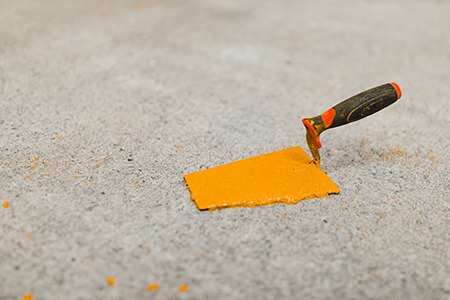
Epoxy paints offer you a durable, water-resistant finish for your project. You get better adhesion than spray paint for a longer-lasting finish with more strength and resistance against scratching and moisture. However, there are fewer color options, and you don't get nearly the same variety as you do with spray paint.
Acrylic Paint
Some will suggest using acrylic paint for porcelain as both the primer and the finishing paint, and that can be fine as well since we're going to be sealing it either way. It's all about adhesion, which can be manipulated by the sanding job you'll be doing. I would recommend sticking with epoxy, though, for the natural characteristics of it such as the much increased water-resistance.
Tools for the Job
Here are the tools you'll need to complete the project:
- Gloves, mask, & goggles
- Rags, bucket, & an all-purpose cleaner
- Plastic cup
- Mineral turpentine
- Sponges, paper towels, & a dry towel
- Adjustable wrench or pliers
- Painters tape and newspaper
- Fine 180-grit sandpaper
- Acrylic latex primer
- Spray paint or epoxy paint
- Epoxy or spray paint
- Epoxy clear coat for spray paint
This is a big list but remember, you’re going to have to have ways to clean up, turn off the water, prepare the toilet surface, and more.
How to Paint a Toilet – 6 Steps for Success
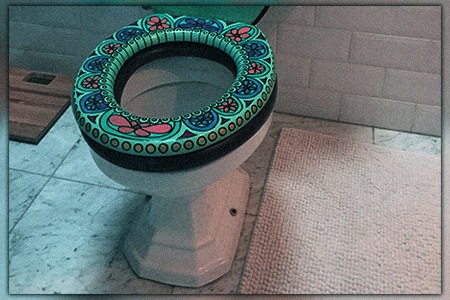
As always, we’re going to put safety first and then we need to prepare our work space and work surfaces. Can you paint a toilet? Yes, but please read through this entire procedure first so you don’t have any surprises once you start.
1) Thoroughly Clean the Toilet
Start by cleaning the toilet using your cleaning equipment. Polish the toilet bowl and tank and ensure you remove all debris, dirt, and dust from the surface. We recommend using an all-purpose cleaner like Pine-Sol or Fabuloso for the toilet cleaning task. Mix 4 cups of the cleaner in a bucket of water and soak the rags.
Wipe down the surface, attending to areas that might be dirtier than others. Ensure you wear rubber gloves when cleaning to prevent the all-purpose cleaner from drying out your skin. Place a towel around the toilet's base while cleaning to absorb any water and cleaning solution from running over the bathroom floor and soaking you.
After you finish the wash down, remove the toilet seat by loosening the bolts under the seat at the back of the toilet. You can use the pliers or adjustable wrench to remove the blots if they're tough to turn.
2) Drain the Toilet
Next, drain the water from the tank and toilet bowl. Close the water valve on the plumbing line to the tank right there near the toilet. If your toilet doesn't have this valve (you should), you'll have to turn off the water at the mains. If you live in an apartment where you don't have access to either, ask the building super about your options.
Lift the flapper, and the water will drain into the toilet bowl. Pin the float using an old soda bottle or crimp it shut to prevent the tank from refilling. It shouldn't refill if you were able to close the water line valve. After draining the tank, use paper towels to soak up the remaining water.
Next, use a plastic cup to remove the water from the bottom of the toilet bowl and soak up and excess with your towel before drying it off with paper towels.
Pro Tips for Preparing the Toilet Surface:
- Before painting, you'll need to ensure the tank and bowl are completely dry.
- Open the doors and windows in the bathroom to improve ventilation in the area and speed up drying time.
- If you have an exhaust fan in the bathroom, turn it on to improve airflow.
- For best results, let it dry out overnight.
The reason I’m harping on about the dryness is that the paint won’t adhere and you won’t get a good sanding finish with a wet toilet. It has to be dry before you proceed. There’s no skipping the wait.
3) Lightly Sand the Toilet
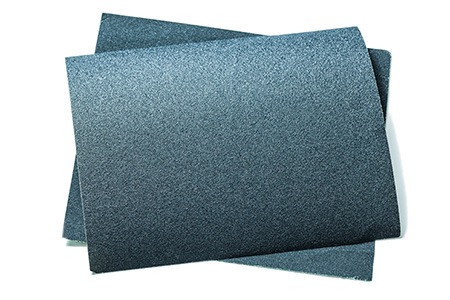
After cleaning and draining the toilet, the next task is to prepare the surface for paint. Put on your mask (respirator), goggles, and gloves. Use the 180-grit sandpaper to lightly sand the porcelain or ceramic surface around the inside and outside of the toilet bowl and the tank's exterior.
Some dust will be generated during your sanding, so wear a respirator to ensure you don't breathe it in. You don't have to apply much pressure to the job, and you're looking for light sanding, not an intensive scoring of the surface.
After you finish sanding, wipe the toilet down with a damp rag and ensure you remove all sanding dust from the surface. Polish the finished surface with a dry towel to ensure it's clean.
4) Apply a Primer
Can you paint a toilet? Yes, but your preparation isn't over yet. With the toilet surface ready for paint, the first task is to apply the primer. Tape off the area around the toilet's base and the tank using painter's tape and newspaper to avoid overspray.
Use a latex types of primer paint for the best adhesion to the surface. The sanding creates more grip for the latex paint, giving it the best adhesion to the ceramic and less chance of bubbling.
You can use a paintbrush for the task, or if you have the budget, we recommend renting a sprayer from the local plant & hire. Sprayers use less paint, with minimal chance of creating any runs. If you're using a paintbrush, ensure you get an even coating. The paint will self-level to the surface but don't overdo it.
5) Paint the Toilet
We recommend leaving the primer to dry overnight. The longer you leave it, the more it cures and the better adhesion you get to the ceramic or porcelain and the spray paint or epoxy. Before you start with your epoxy or spray paint, wipe the surface down gently to remove any dust that might have settled on the surface.
If you're using spray paint or epoxy in a sprayer, stand around two feet from the toilet and spray a light coat, building on each layer with every consecutive pass. If you're painting with epoxy with a paintbrush, take care not to over-apply the paint which can create runs or drips.
Wait 30 minutes between each coat and paint two coats total. If you're using spray paint, you'll have to seal the paint job with two coats of clear coat to ensure a durable and scratch-resistant finish. Epoxy is more resilient, but nothing stops you from adding a layer or two of clear coat to improve its strength and how sealed it is. I recommend doing so.
6) Clean Up
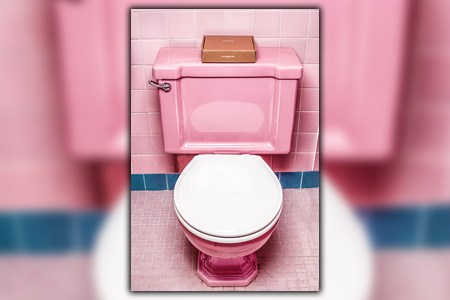
After you finish the paint job, leave the toilet overnight to dry completely. Depending on the paint, it could take anywhere from 15 minutes to 24 hours to "cure" completely. Check the manufacturer's instructions for drying times.
Remove the painter's tape and newspaper. If you have any overspray, use mineral turpentine to remove the paint. Wash the floor and replace the toilet seat. Remove the prop or crimp from the float, turn on the water valve, and let the tank refill.
Can You Paint a Stained Toilet?
A stained toilet looks terrible and highly unattractive in the bathroom. If your toilet looks like it belongs in a truck stop, painting it is the ideal way to restore its visual aesthetic and improve the look and appeal of your bathroom, especially if you're selling your home.
You'll follow the same procedure outlined for painting the toilet. However, you might want to spend a little more time cleaning and sanding to remove as much of the stain as possible. This may be hard water ring stains or worse from pitting in the surface.
If the toilet is highly stained, we recommend using a darker color paint to avoid any chance of the stain bleeding through the painted surface. In most cases, using latex epoxy primer should cover the stains as long as you prep the surface well enough for proper adhesion.
FAQ’s Regarding Painting a Toilet Bowl, Tank, & Exterior
You can’t just ask “can you paint a toilet?” and get a simple answer, because there’s far more details at work than simply slapping paint on a brush and getting it done. Let’s look at those details now.
Can I Paint the Toilet Seat?
Yes. You can paint the toilet seat. Follow the same process for painting the toilet. Plastic toilet seats are harder to paint, but our guide makes painting polyresin types of toilet seats and plastic and wooden toilet seats easy. Remove the toilet seat, prep, and paint it in an outdoor area if possible. For best results, use spray paint or a paint sprayer for epoxy paint.
What Paint for a Toilet is Most Suitable for the Task?
We recommend spray paint or epoxy paint for your toilet. You'll need to use a latex-based epoxy paint to prime the surface before finishing with either spray paint or epoxy. We recommend sealing the paint job with a clear coat, available in a spray can format to prevent scratches and the longest service life.
Key Takeaways for Painting a Toilet
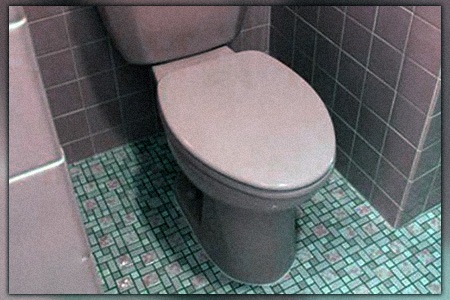
Let’s summarize the main points above as a quick recap:
- Can a toilet be painted? Yes, you can paint your toilet bowl, tank, & seat to refurbish it.
- Spray paints offer the widest range of colors & easy finishing, but you'll need to use a clear coat to seal the final product.
- If you're painting with epoxy, use a sprayer for the best results.
- Follow our six-step process for a long-lasting finish with a clean, protective finish.
The procedure basically consists of directions to clean and disconnect the toilet from water, allow it to dry thoroughly and completely, sand the surface and wipe it down, dry again, then paint and seal it. Get the details from above.
So, Can You Paint a Toilet? You Sure Can!
Toilets are painted and glazed in the first place, and just like refinishing or painting a plastic bathtub, you can do so with a toilet. It’s not a complicated job to do, and unless you’re changing the color entirely you can probably get away with just painting the toilet bowl itself, which is where the pitting and staining occurs. So can you paint a toilet? Yes and it’s not difficult, so feel free to do so with our guidance above.



